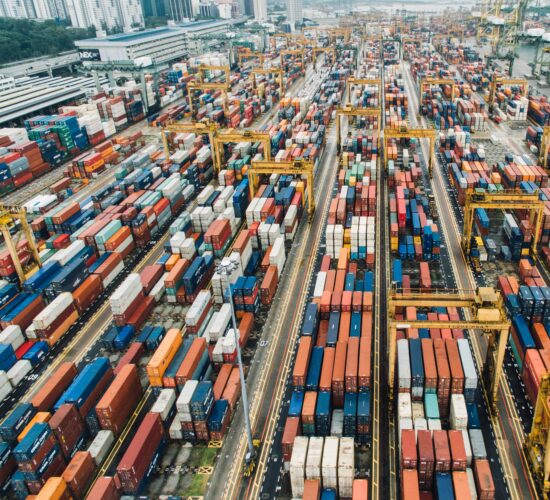Fortifying the Backbone of Logistics: Effective Strategies to Secure Warehouses and Distribution Centers

Modern supply chains hinge on the efficient, uninterrupted operation of warehouses and distribution centers. These facilities store valuable goods and represent critical nodes in a network responsible for timely deliveries, customer satisfaction, and business continuity. Yet, the very elements that make them efficient—automation, vast storage areas, constant inbound and outbound movement—also make them vulnerable to a wide range of security threats, including theft, sabotage, cyberattacks, and natural disasters. Securing these facilities requires more than just sturdy locks and surveillance cameras. It involves a comprehensive, multi-layered approach that blends technology, human oversight, and strategic planning.
Physical Security and Access Control
Physical access remains one of the most critical aspects of warehouse security. Extensive facilities with multiple entry points can be difficult to monitor without a centralized system. One of the best practices is to implement tiered access control based on employee roles. For example, warehouse workers may need access only to specific storage zones, while logistics coordinators may require entry into shipping and receiving areas. Installing keycard systems, biometric scanners, or mobile-based access credentials ensures that only authorized personnel enter sensitive areas.
Security checkpoints at all vehicle and pedestrian entry points, paired with identity verification systems, act as the first layer of deterrence. Video surveillance cameras with motion detection and real-time monitoring must cover all access points, blind spots, and high-value inventory zones. These should be maintained regularly to ensure continuous operation, especially during off-hours.
Internal Threat Mitigation
One of the most underestimated threats in warehouse environments is internal theft. Employees, while essential to daily operations, may exploit gaps in oversight or take advantage of routine patterns. Rotating staff schedules, regular audits, and anonymous reporting channels should be implemented to mitigate this. Managers should also cultivate a security-conscious culture by training employees on the importance of integrity and awareness.
Conducting routine inventory checks through warehouse management systems (WMS) helps reconcile discrepancies swiftly. Advanced WMS platforms can trigger alerts when inventory levels change unexpectedly or goods are moved without proper documentation. Combining these systems with surveillance footage further aids investigations and reduces repeat offenses.
Cybersecurity for Connected Systems
Today’s warehouses often operate through sophisticated networks integrating automated storage solutions, IoT devices, robotics, and real-time data analytics. With these advancements comes increased exposure to cyber threats. A breach in warehouse management software or access control systems can allow unauthorized access to inventory, disrupt operations, or expose sensitive customer data.
Best practices for cybersecurity include network segmentation, regular software patching, and firewalls tailored explicitly for industrial control systems. Access to digital systems should mirror physical access protocols, limiting users based on necessity. Two-factor authentication and encrypted communication should be enforced as standard procedures. Most importantly, cybersecurity awareness training should be mandatory, ensuring all employees understand phishing risks, data protection policies, and proper handling of mobile devices.
Perimeter Security and Environmental Design
A warehouse’s physical layout significantly affects its vulnerability to breaches. Strong perimeter security measures should include high fencing, razor wire, anti-ram barriers, and secure gating systems. Lighting is another simple yet powerful deterrent. Motion-activated lighting and floodlights can discourage nighttime intrusions, especially when paired with high-definition outdoor cameras.
Strategic landscaping can also be a form of security. Eliminating tall shrubs near building walls, for example, removes hiding spots for potential intruders. Designing the facility with limited blind spots and integrating emergency exits that only open from the inside helps control traffic and reduce access vulnerabilities.
Emergency Preparedness and Response
Warehouses face not only criminal threats but also the risks posed by fires, floods, chemical leaks, and natural disasters. Therefore, emergency preparedness is essential. Facilities must be equipped with up-to-date fire suppression systems, clear evacuation routes, and alarms that are both audible and visible.
Emergency drills should be scheduled at regular intervals and include scenarios for both natural and man-made incidents. Employees must know where to go, how to communicate during emergencies, and who to report to. Designating a crisis management team ensures that there is leadership in place when quick decisions are needed.
Additionally, backup generators and power supplies are crucial for maintaining security and inventory systems during power outages. Cloud-based backups for critical data and mobile contingency plans enable continuity, even if the primary systems are compromised.
Vendor and Delivery Oversight
A common vulnerability in distribution centers comes from third-party vendors and delivery personnel who enter and exit regularly. These individuals should never be allowed unsupervised access to storage zones. Implementing vendor screening procedures, temporary access credentials, and supervised loading/unloading zones reduces this risk.
Delivery docks are particularly vulnerable, as they can be used to smuggle goods out or introduce unauthorized personnel in. RFID-enabled pallets, barcode scanning, and real-time tracking ensure only scheduled shipments are processed. Security staff should maintain logs of all deliveries and match them against electronic records to detect irregularities quickly.
Integrating Smart Technologies
Security technology is evolving rapidly, and modern warehouses can take advantage of tools that weren’t available even a decade ago. AI-powered surveillance systems can detect suspicious behavior patterns, such as loitering or abnormal movement. Drones can conduct aerial surveillance of large properties, providing real-time footage to centralized security teams.
Sensors embedded in storage racks, floors, or containers can alert staff when goods are moved without authorization or if temperature-sensitive items are exposed to risk. Mobile apps integrated with WMS and security systems allow managers to monitor operations remotely, receive alerts, and initiate lockdown procedures even while off-site.
Securing warehouses and distribution centers isn’t just about avoiding financial losses—it’s about ensuring reliability, protecting employees, and maintaining customer trust. As logistics operations become more digitized and complex, so too must the strategies for safeguarding them. A proactive, layered security approach combining physical controls, digital defenses, emergency planning, and employee engagement is no longer optional but essential. Only through ongoing investment in best practices and a commitment to evolving with threats can businesses ensure their supply chain infrastructure remains resilient and secure.
Additional Information
- Blogs
- Ari Raptis